This is part four of our Newfoundland trip. Read part 1, part 2, part 3.
Salt-box house
We rented a traditional salt-box house in Bonavista for our last week in Newfoundland. A salt–box house is essentially a square, two-story house with a steeply sloping roof and a lean-to type extension on the main level. The house looks small from the outside, but it is surprisingly spacious inside. Our saltbox house had the original staircase and some original flooring, while the rest had been done up in a tasteful and sympathetic modern style. The kitchen had table in the middle, and upstairs were two small bedrooms with iron-frame beds with cozy quilts on them. All that’s missing is lace curtains – most salt–box homes have them. The color scheme of mustard with dark green trim seems to be traditional as well.

Our saltbox house was located on the outskirts of Bonavista. The white house to the right of it, with its more gently sloping roof, is a biscuit-box house. Once I figured out these styles, I started spotting them everywhere on the Bonavista Peninsula. For example, the house on the right with the dormers and peeling paint is a salt-box house as well.

We had a view of the sea. One day, looking out the kitchen window while having a cup of tea, I saw a whale’s spout and dorsal fin.

Diana relaxing with a book under a quilt. The tradition of quilting is very strong in Newfoundland.
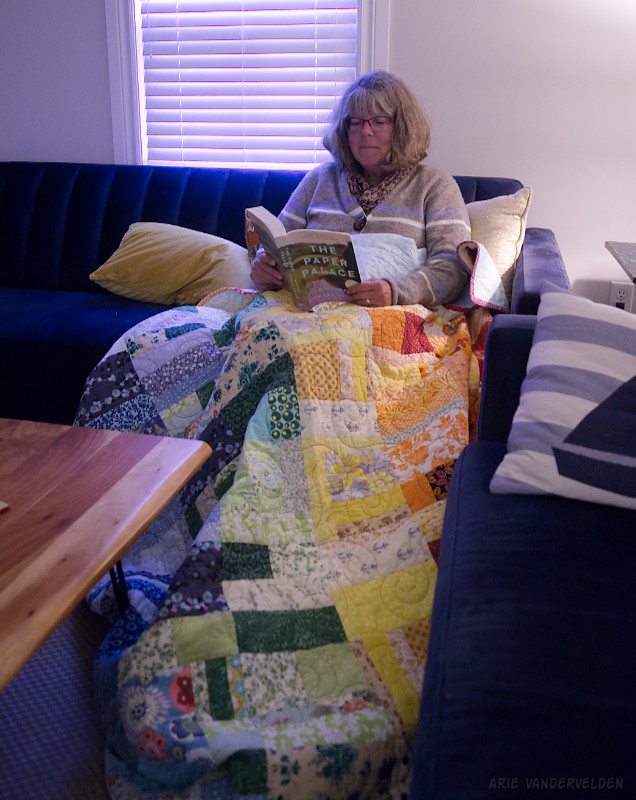
Bonavista
We wandered to the harbour area on a foggy day. The soft light was wonderful for photography.

Wharf.
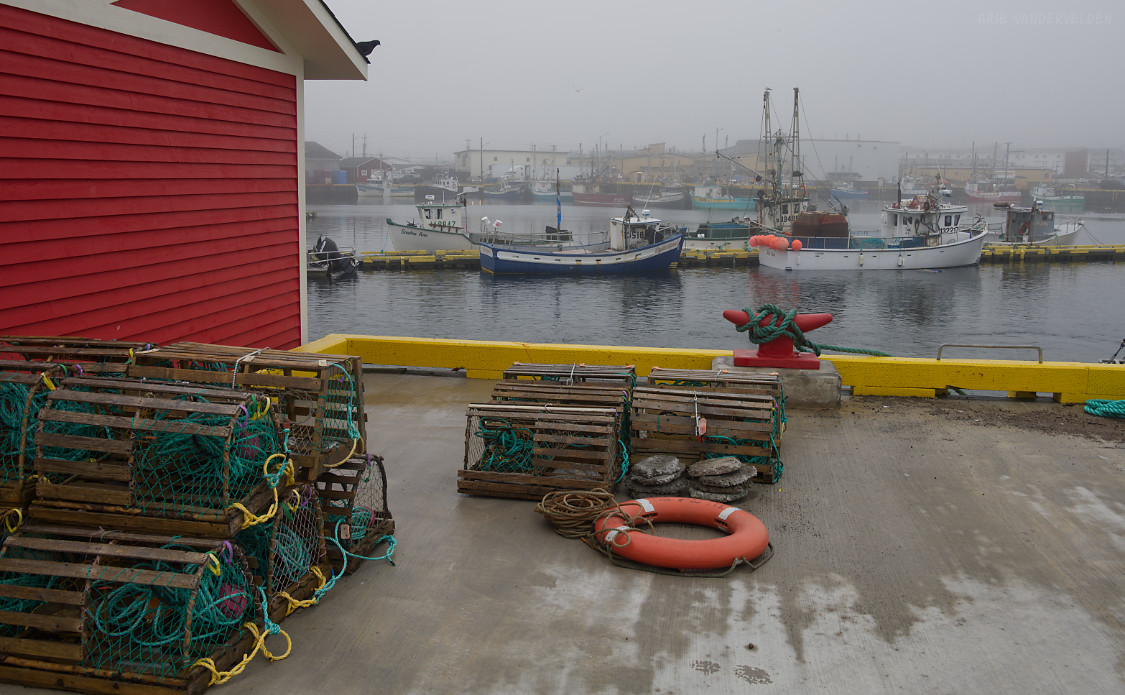
Boats tied up in Bonavista Harbour.
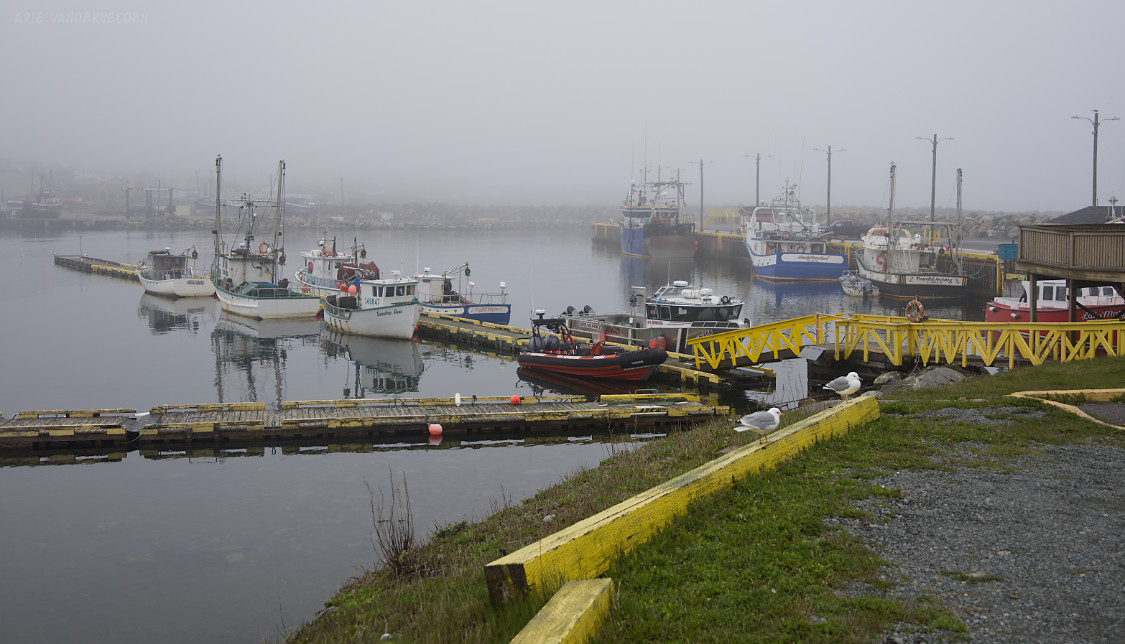
Scenic Bonavista harbour. The white buildings in the back are the Ryan Premises.
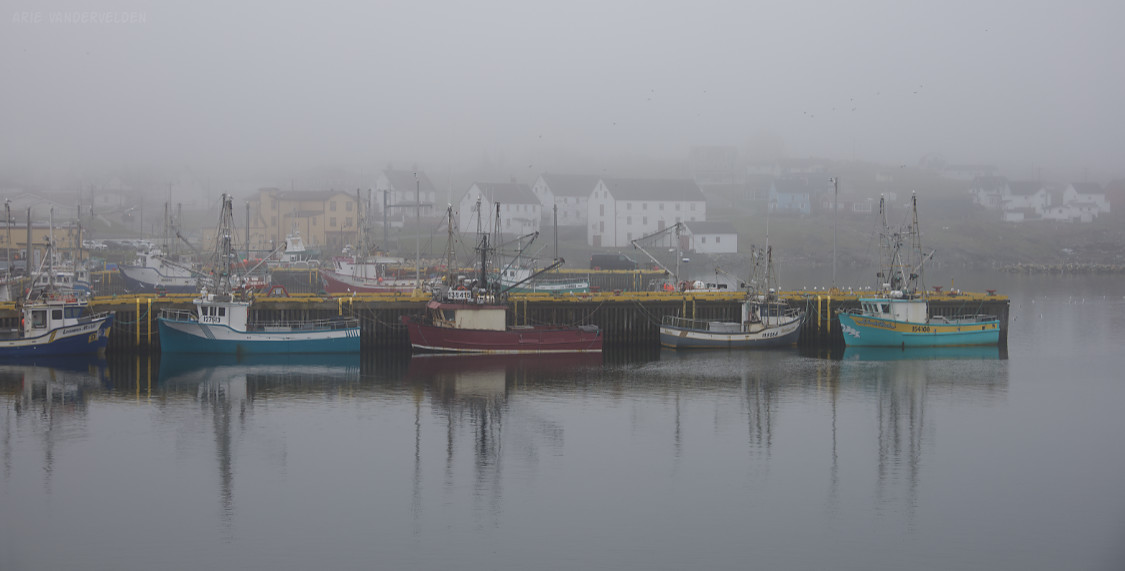
James Ryan was the tycoon who controlled Bonavista’s fish export, and owned the store in town. Mr. Ryan sold everything Bonavista’s fishermen needed, including televisions and caskets. Mr. Ryan controlled the prices of the fish he bought from the fishermen, and he controlled the prices of the goods he sold back to them. Guess who came out ahead in this deal…. By the way, this is the same James Ryan who built the sumptuous Ryan Mansion in St. John’s, now a boutique hotel.
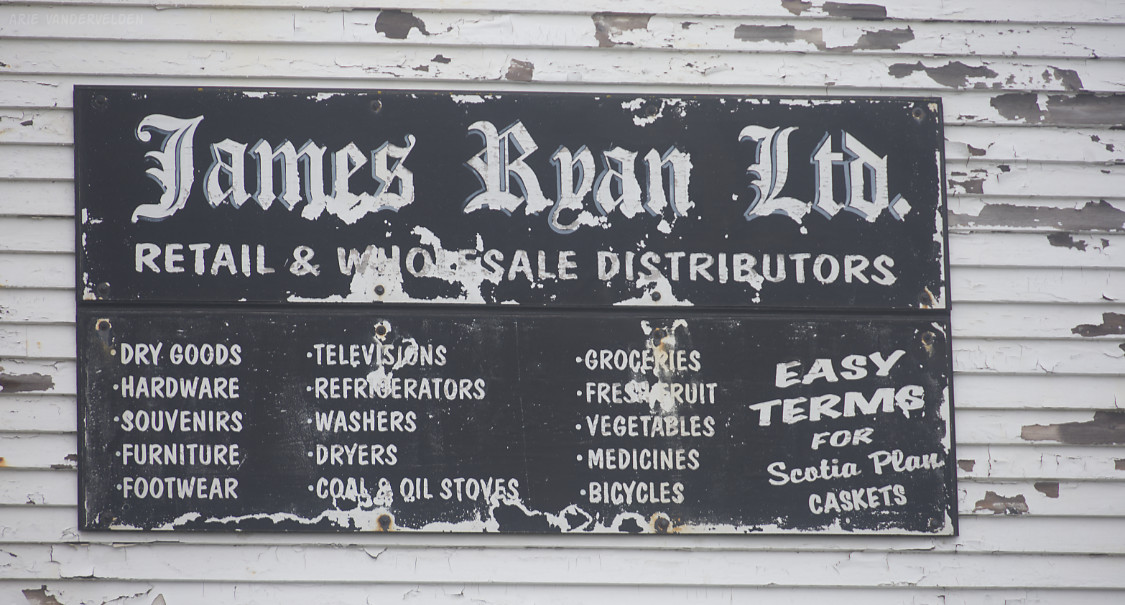
The Ryan Premises is now a museum run by Parks Canada.
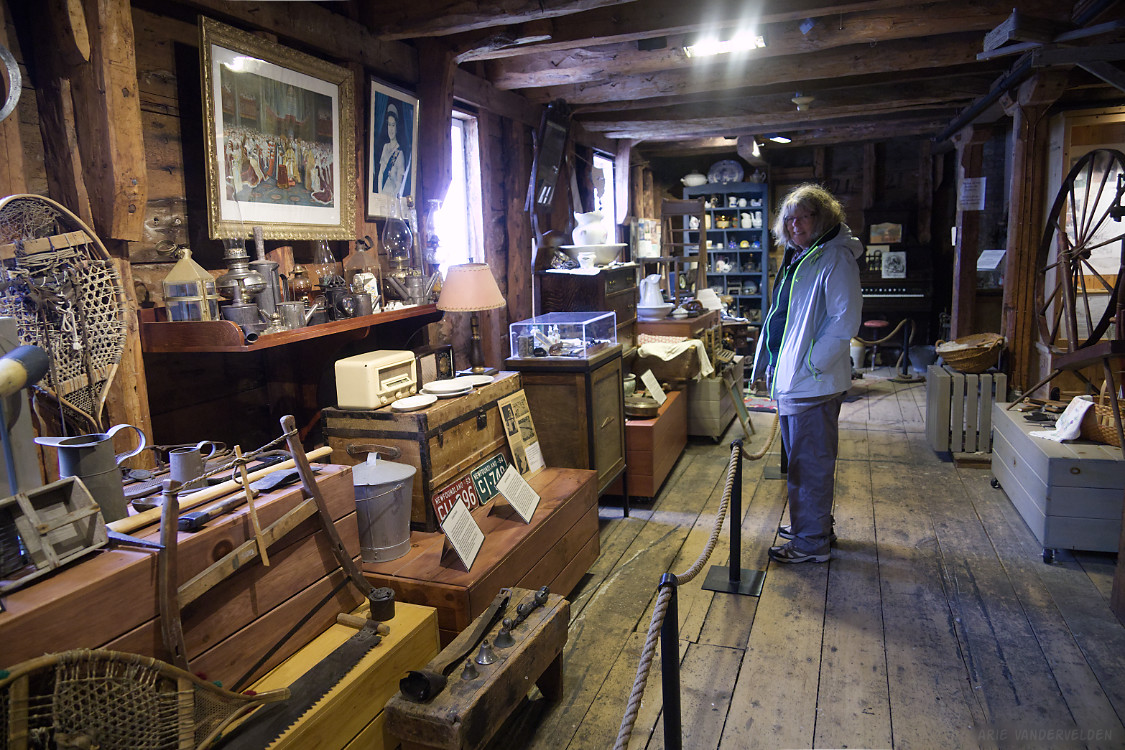
Bonavista Lighthouse
Diana walks to lighthouse at the tip of the Bonavista Peninsula. We took a tour of the lighthouse, and it was surprisingly luxurious inside.

There happened to be an iceberg floating in the bay beside the lighthouse.
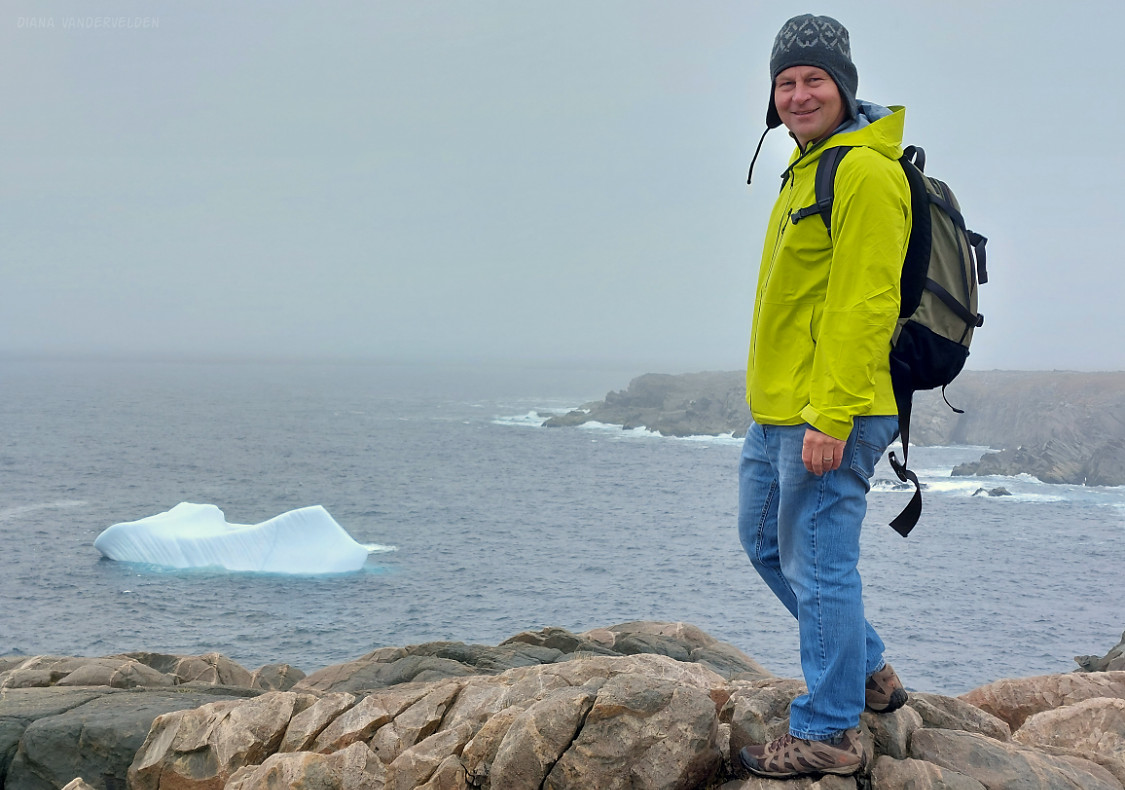
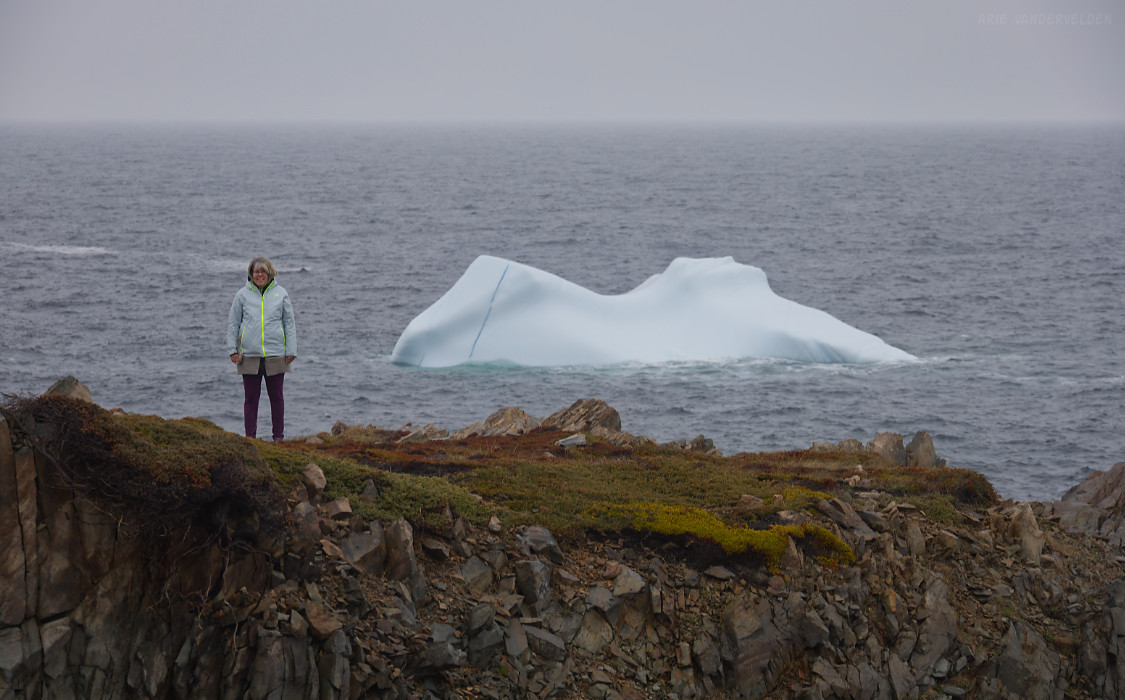
Behind the lighthouse was a sea stack with a puffin colony on it. I tried to take some photos, but the birds were distant. I did enjoy watching them coming out of their burrows and flying off to sea. The birds seemed oblivious to the blare of the nearby foghorn.
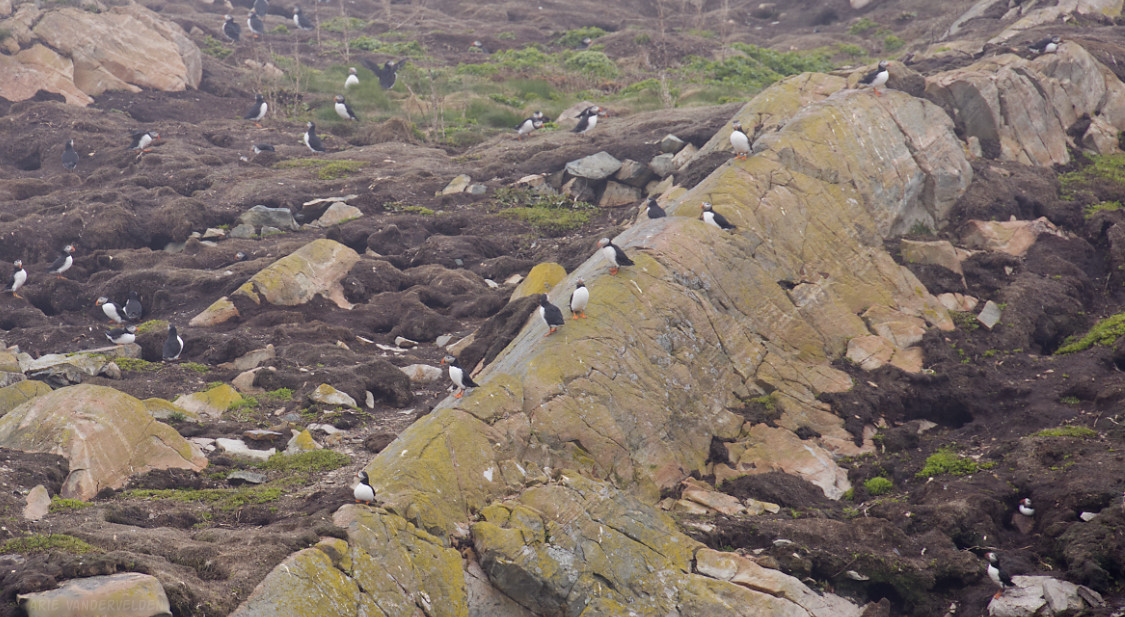
Bonavista is the location where explorer John Cabot reportedly made landfall in 1497. John Cabot (whose real name was Giovanni Caboto) was a Venetian explorer who has funded by England to discover new lands. Unlike Columbus, Caboto’s Genoese colleague who five years earlier got hopelessly lost in the Caribbean and thought he had landed in India, Caboto knew exactly where he was. Caboto discovered Newfoundland and the cod stocks in the surrounding waters. Near Bonavista’s lighthouse is a statue honoring the man.
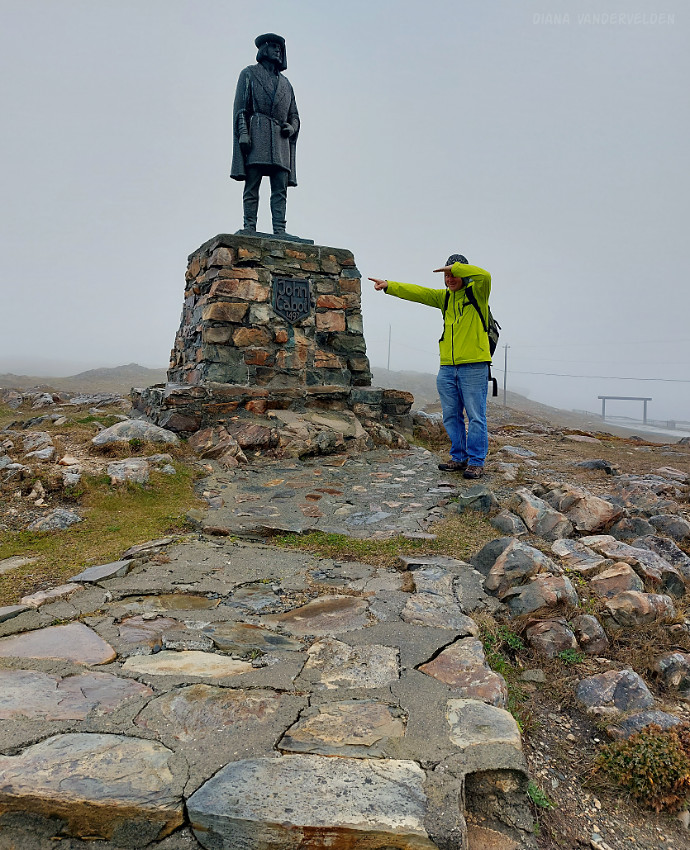
Elliston and Spillars Cove
Elliston is a small village near Bonavista. It is known for its root cellars and puffins. Here is an example of a root cellar:

Elliston has more than 100 root cellars, and more than half are said to be still in use.
Elliston has a famous puffin-viewing site. At the end of a skinny peninsula, there is a rock with a puffin colony on it. We followed the line of tourists to the site, but the birds were about equally distant as those on the rock behind the Bonavista lighthouse. We shrugged and went on to the next item on our itinerary: a hike of a headland at nearly Spillars Cove.
At first, the Klondike Trail hike at Spillars Cove seemed pointless. It was foggy, and there would not be any wide vistas. But we hiked on anyways. When we got to a coastal cliff I could see some puffins flying around. They seemed to be landing on a ledge just ahead and below me, just out of sight. I tried to get closer, and when I saw a little puffin head I crouched and crept forward slowly and ever so gently. The birds spotted me but did not seem disturbed. I started clicking away.
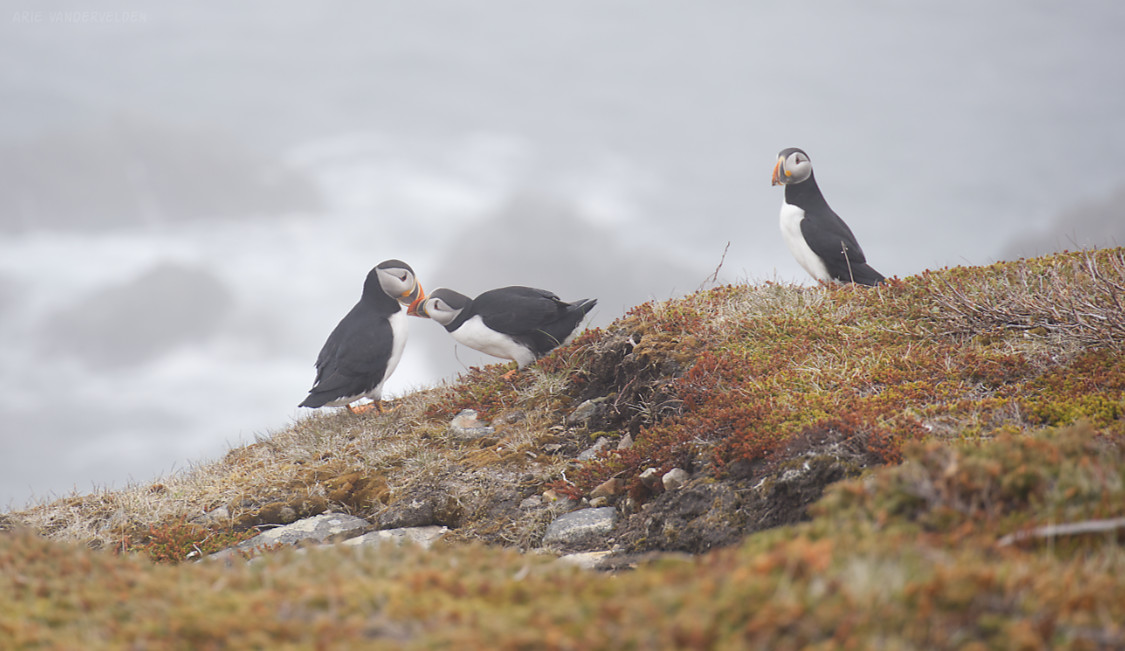
I only had 240 mm at the telephoto lens of my camera. So I tried to crawl even closer.

The fog created wonderfully soft light, without harsh shadows.

I had previously photographed puffins in Iceland, but I think I got just as close here.

It was amazing spending some time with these birds as such close range. So much for the “official” puffin viewing site at Elliston – this was much more exciting.
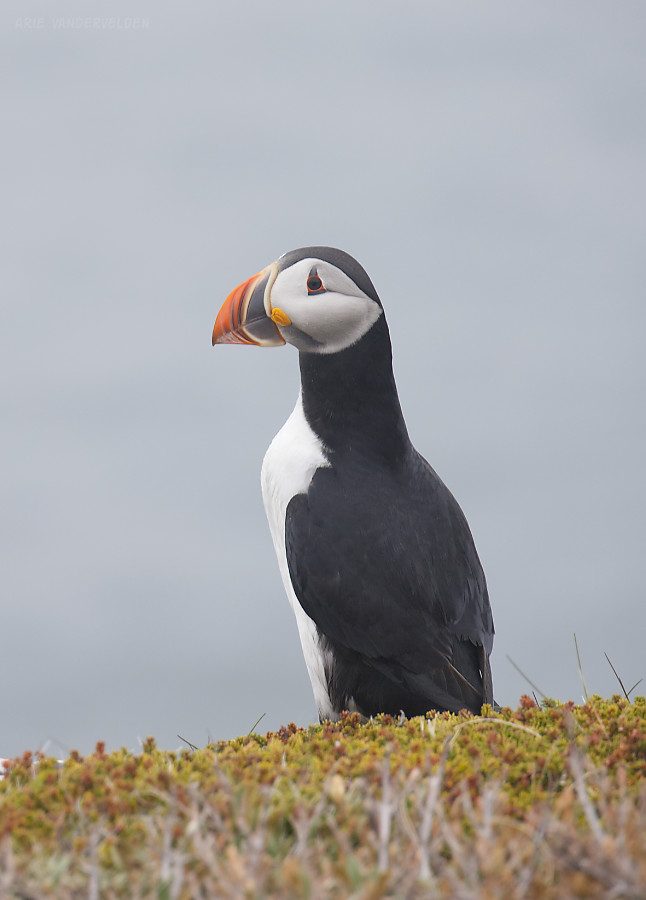
We wandered on. The sea cliffs were spectacular along this headland, with wild waves pounding against sheer cliffs.
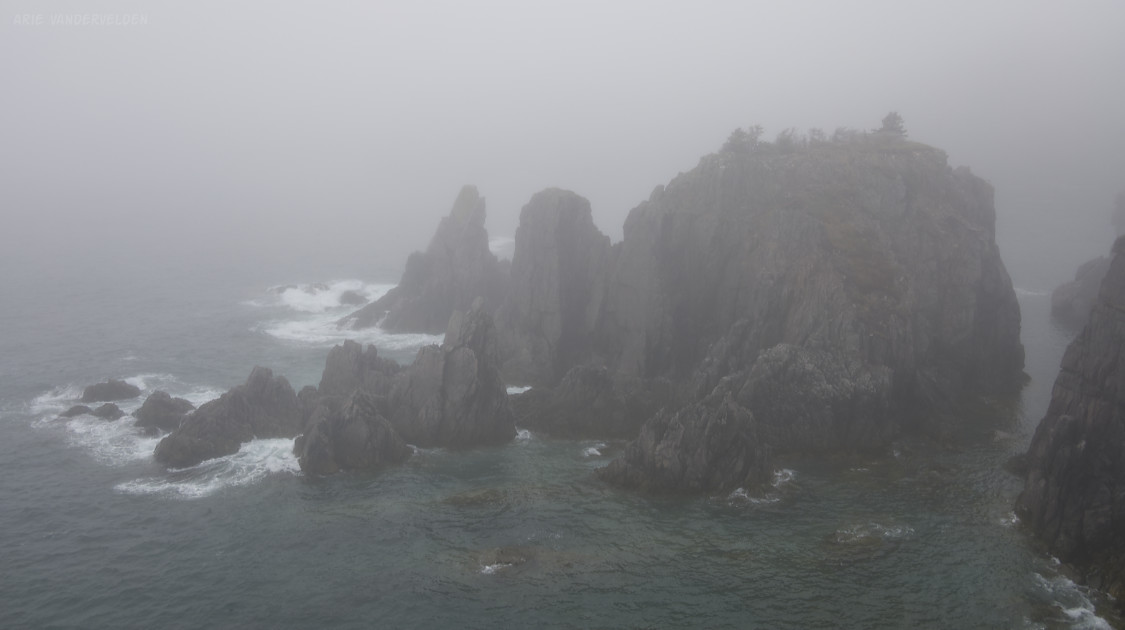
A needle-like pillar rose from the ocean.
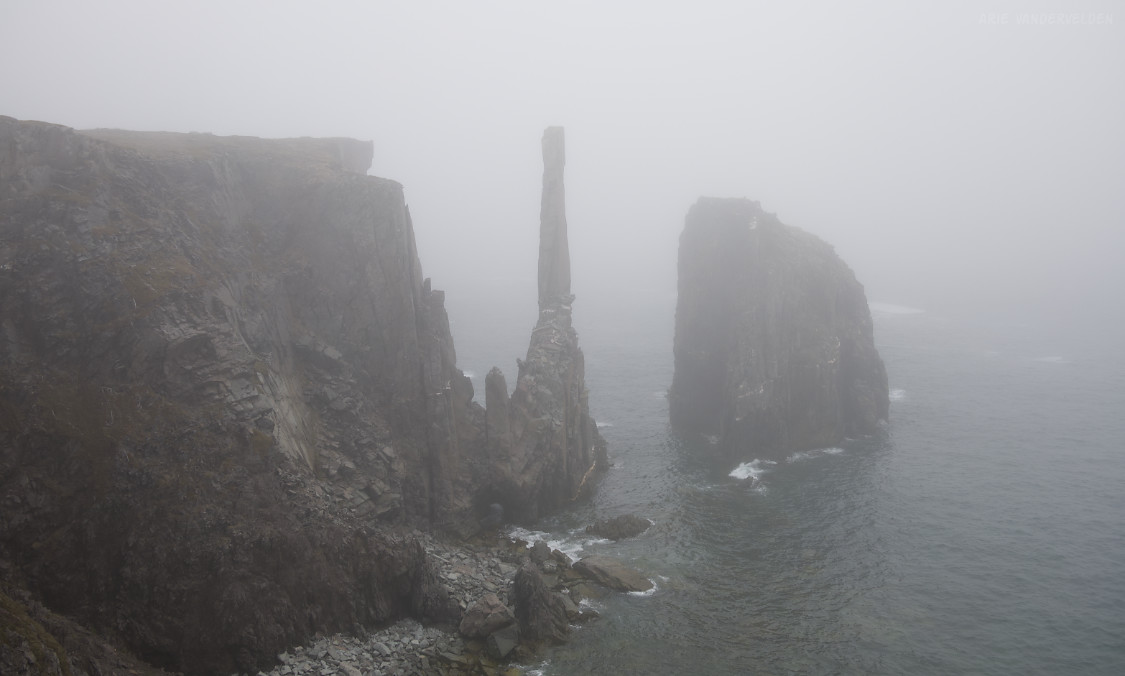
Diana hiking the Klondike Trail

At the tip of the peninsula were some small islands. They rose from the ocean with steep vertical lines – a pattern that reminded me of the art-deco style of the 1920s. Here, some puffins are resting on some narrow ledges.

The steep-sided islands were just barely visible through the fog. I’d love to come back here when the visibility is better.
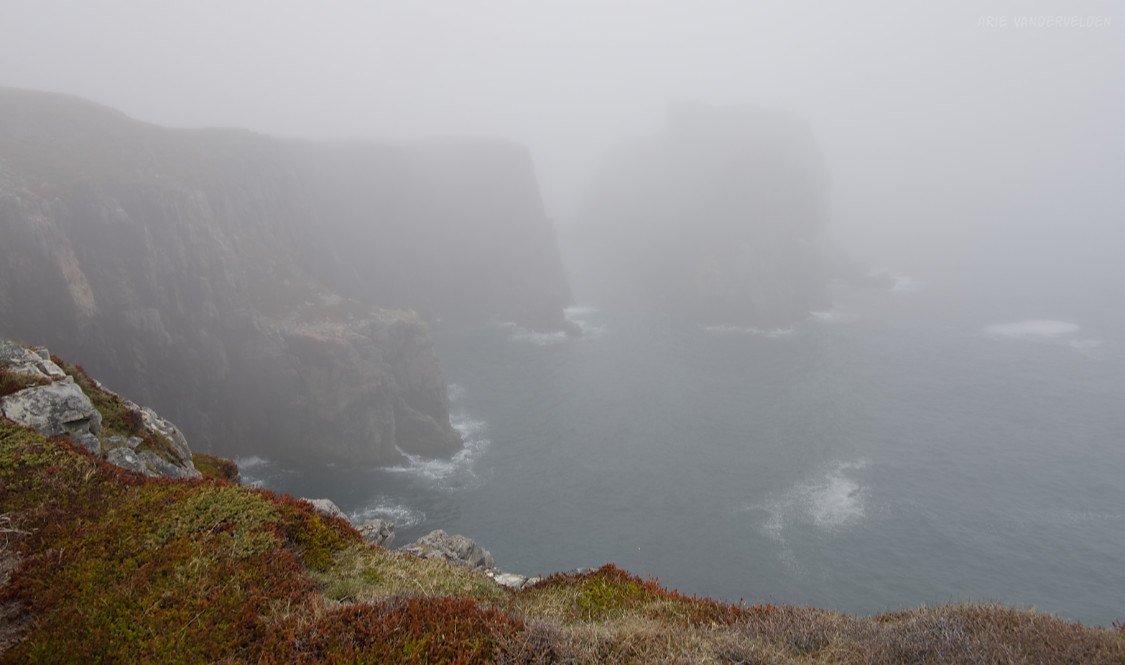
Continue to part five, the final blog post covering our trip to Newfoundland.
